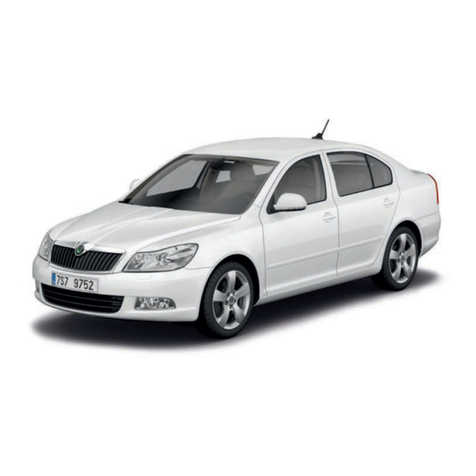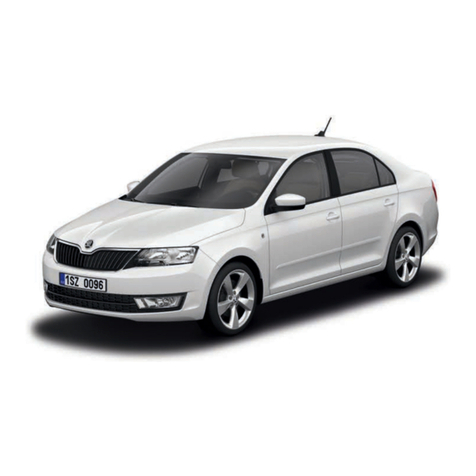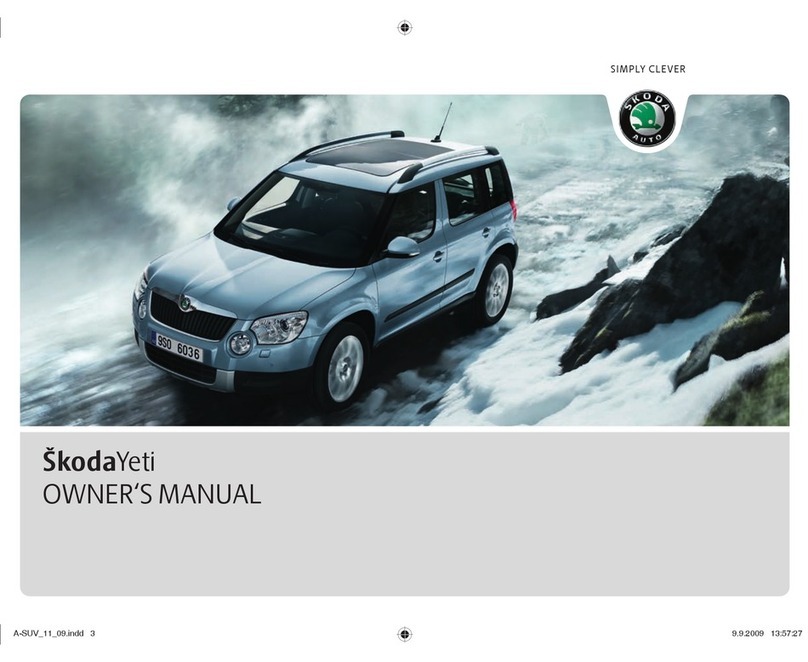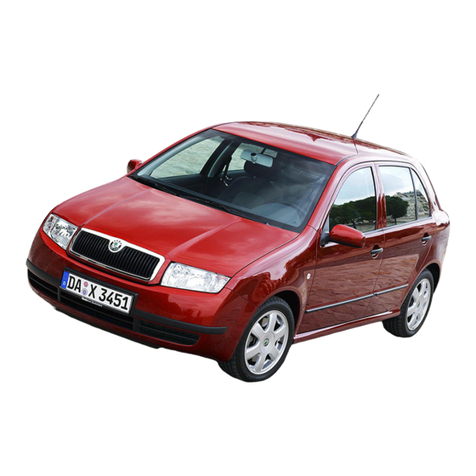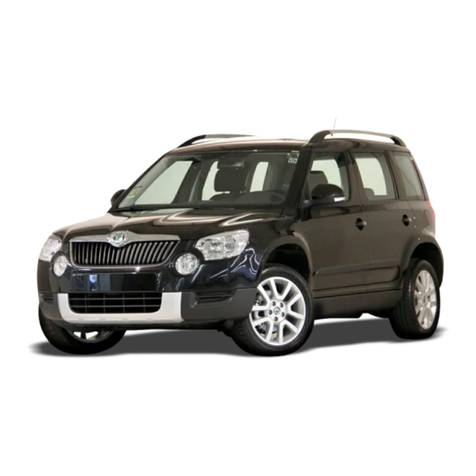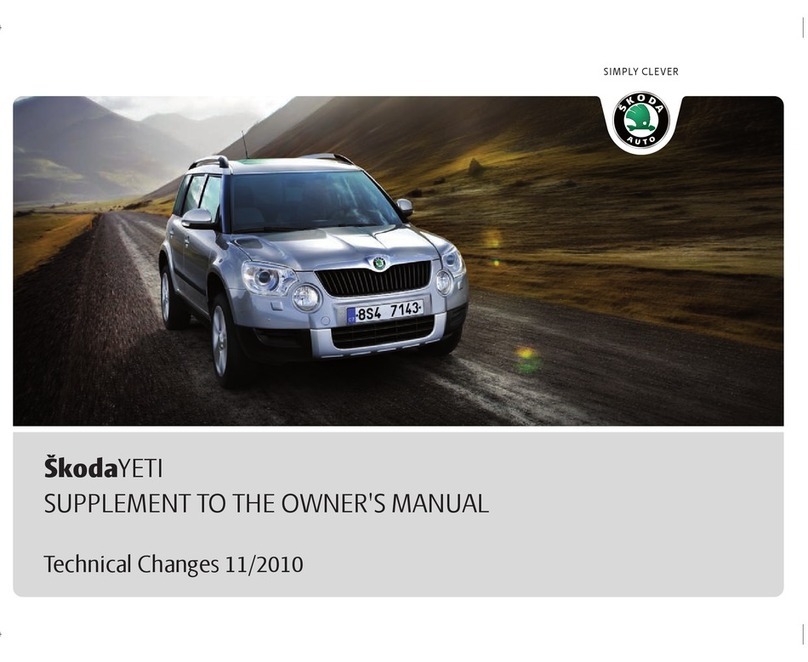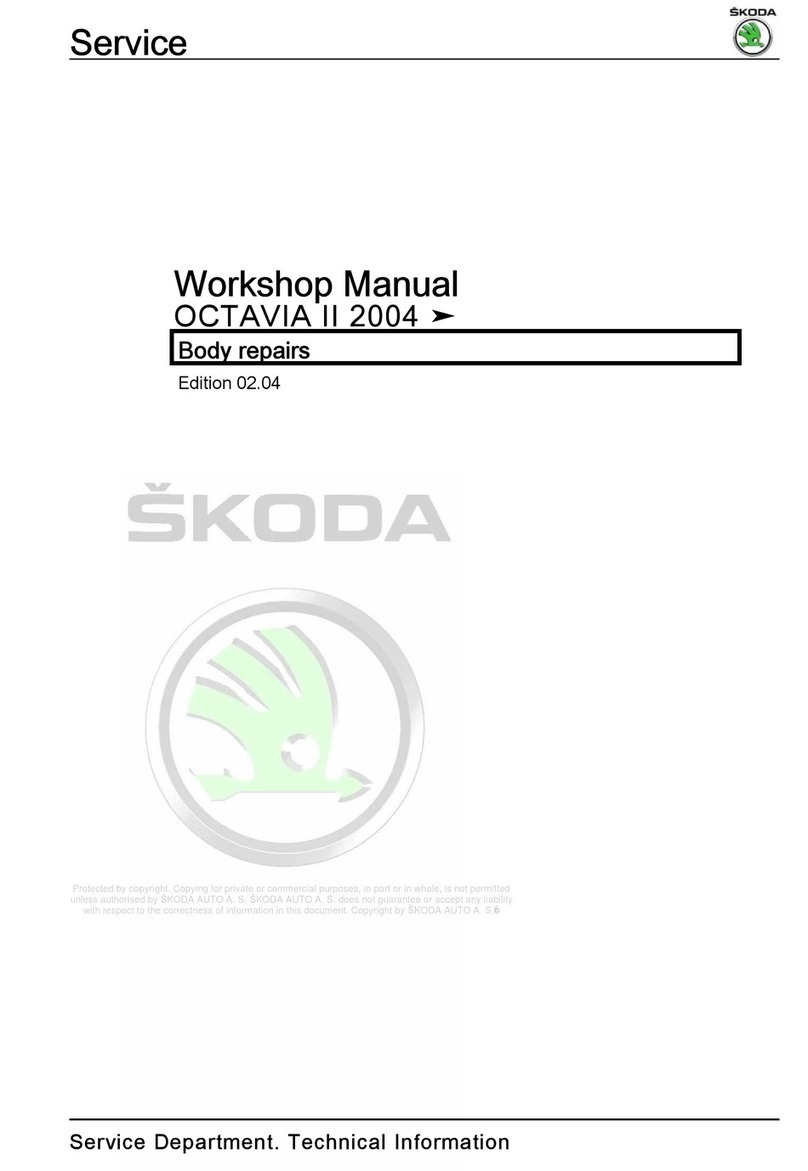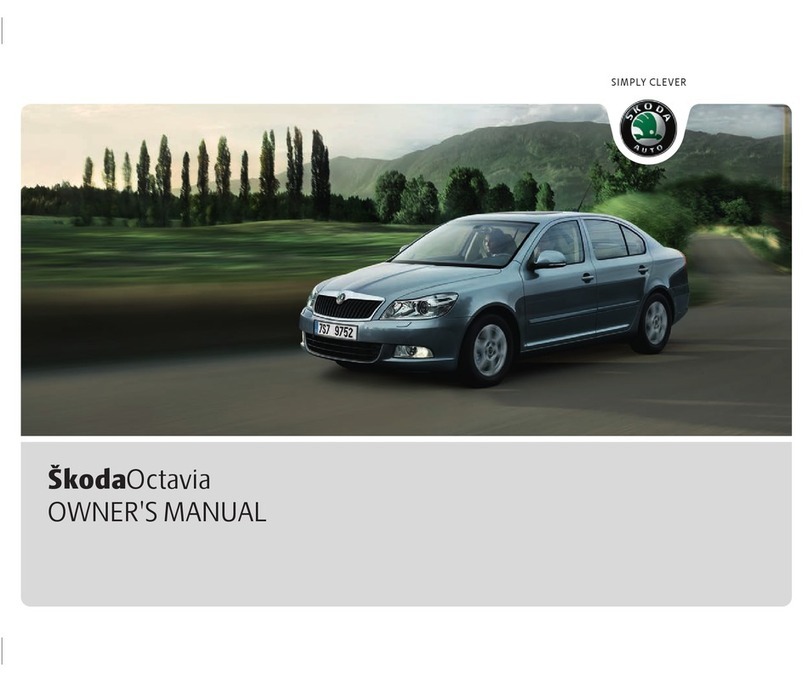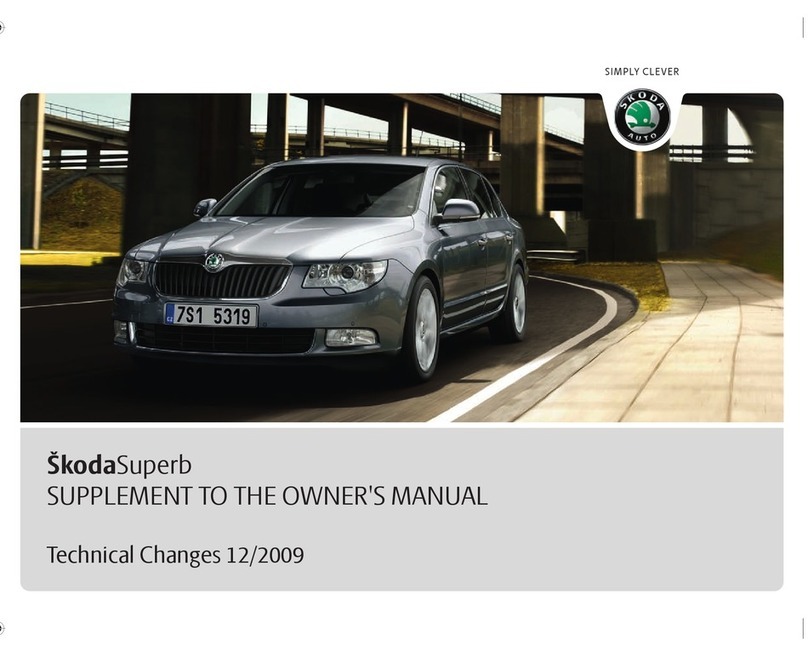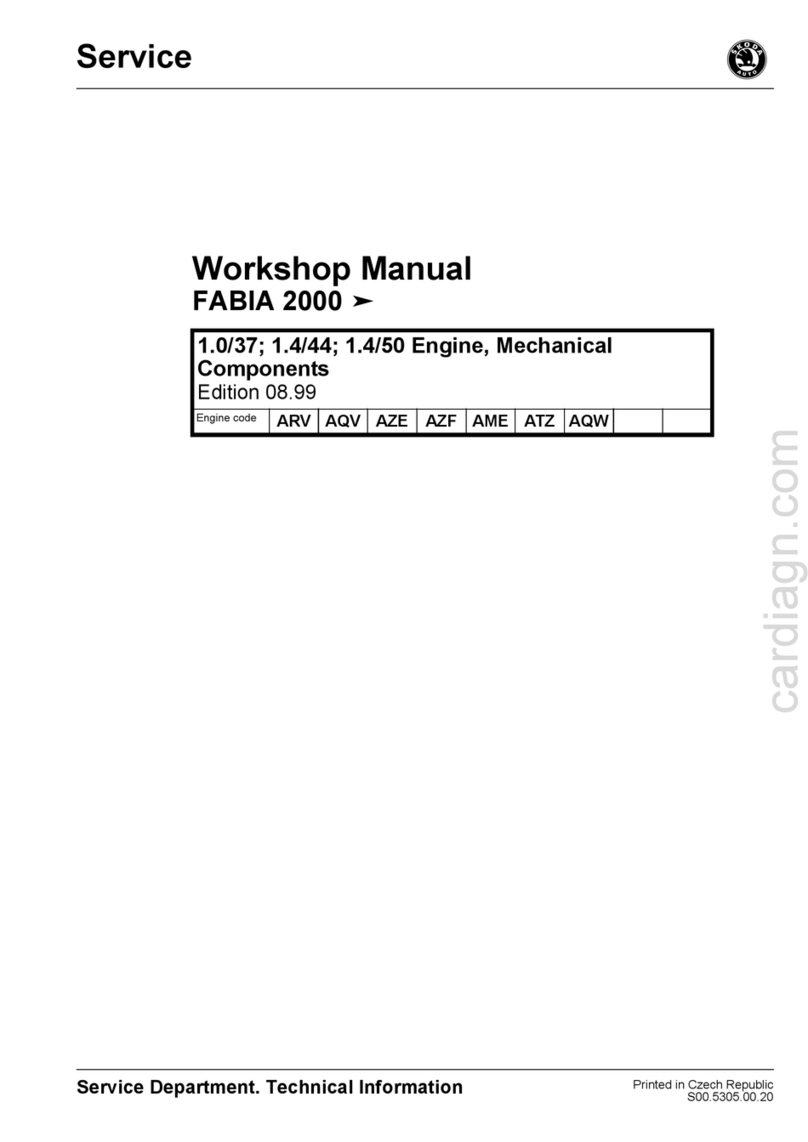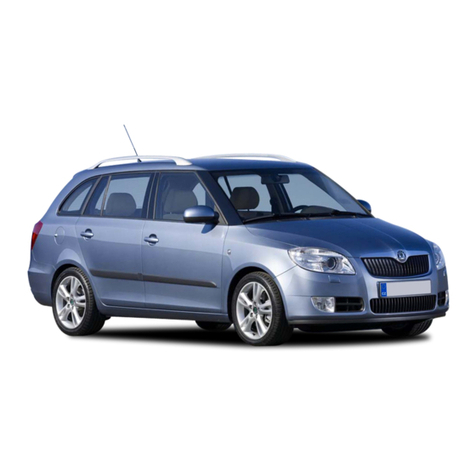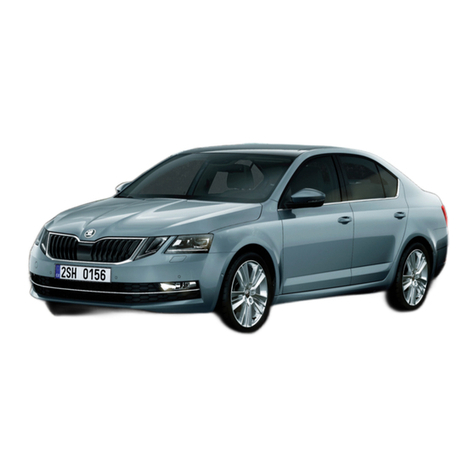
About the Owner's Manual
General points
This Owner's Manual applies to all chassis variants
of the vehicle, including all models and trim levels.
All possible trim levels are described here without
identifying them as special trims, model variants or
market-dependent equipment. This means that not
all the trim components described in this Owner's
Manual are available in your vehicle.
The images in this Owner’s Manual are for illustra-
tive purposes only. The images may dier from your
vehicle; these are for general information purposes
only.
ŠKODA AUTO is constantly working on the further
development of all vehicles. It is therefore possible
for changes to be made at any time to the scope of
delivery in terms of shape, equipment and technolo-
gy. The information contained in this Owner's Man-
ual corresponds to the information available at the
time of going to press.
No legal claims can therefore be derived from the
technical data, illustrations and information in this
Owner’s Manual.
Digital version of the Owner's Manual
The printed Owner’s Manual contains the most im-
portant information regarding vehicle operation and
vehicle maintenance.
Complete information is included in the digital ver-
sion of the Owner's Manual. This is available on the
ŠKODA web pages as well as in the mobile applica-
tion which can be downloaded.
http://go.skoda.eu/owners-manuals
About the Owner's Manual
General
This Owner's Manual applies to all chassis variants
of the vehicle, including all models and trim levels.
All possible trim levels are described here without
identifying them as special trims, model variants or
market-dependent equipment. This means that not
all the trim components described in this Owner's
Manual are available in your vehicle.
The images in this Owner’s Manual are for illustra-
tive purposes only. The images may dier from your
vehicle; these are for general information purposes
only.
ŠKODA AUTO is constantly working on the further
development of all vehicles. It is therefore possible
for changes to be made at any time to the scope of
delivery in terms of shape, equipment and technolo-
gy. The information contained in this Owner's Man-
ual corresponds to the information available at the
time of going to press.
No legal claims can therefore be derived from the
technical data, illustrations and information in this
Owner’s Manual.
4About the Owner's Manual

